The first encounter with a bamboo grove is a singular and wholesome experience. One of its most distinctive features is the sound—a creaking, wooden clack that echoes softly as the wind moves through the tall stalks. The entire grove sways in rhythm, and standing there, listening to this musical and ancient sound, can make one feel connected to something larger and older than oneself.
Neither fully a tree nor merely a plant, bamboo is closer to grass. It belongs to the Poaceae family and includes around 1,400 species found across nearly every continent, with the exception of Europe. Some species grow more than ten meters in a single year, crowding out sunlight from the understory and transforming entire landscapes.
In Japan, bamboo has been cultivated for centuries. Ancient texts like the Kojiki and Nihon Shoki mention bamboo shoots as food and medicine. Today, three main species grow across the country: madake, moso, and hachiku. Of these, moso is the most common, introduced from China in the 18th century and widely planted thereafter. Until the 1970s, bamboo farming supported rural economies, but as plastics took over and imports increased, many groves lay abandoned.
One of the most peculiar things about bamboo is its flowering cycle. Madake and hachiku bloom only once every 120 years. Their flowers are small and rice-like, carried away by the wind. After flowering, the entire plant dies. How has bamboo endured such a self-destructive cycle? The answer lies underground: its rhizomes, a sprawling root network, allow it to reproduce clonally and spread quickly. Though mass flowering and die-off seem catastrophic, they make way for the next generation to grow unimpeded.
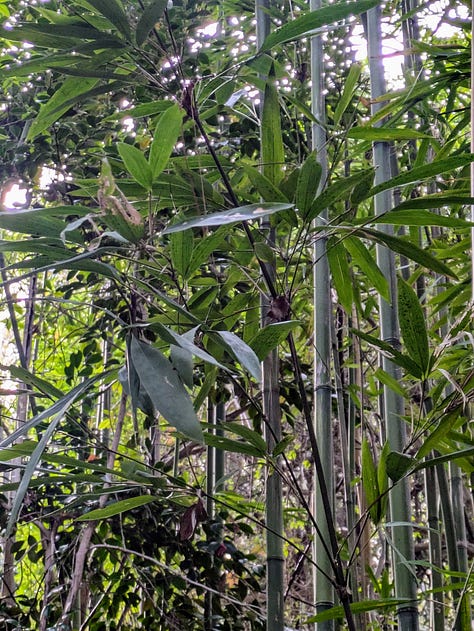
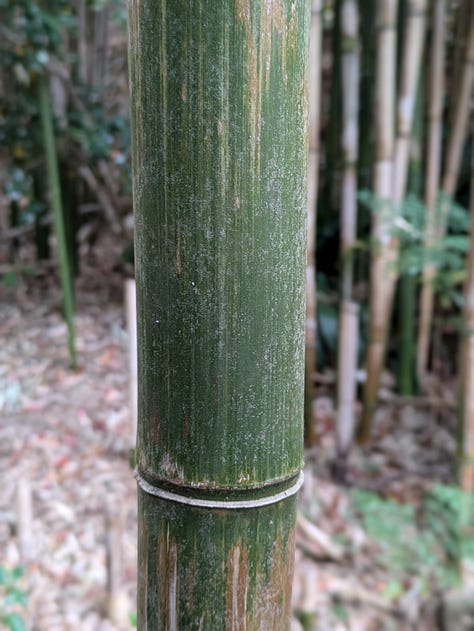

In the past, bamboo flowering was viewed as a harbinger of misfortune possibly due to the unpredictability of its flowering. Insects, failed crops, or rat infestations often followed, along with a sudden disappearance of usable bamboo. When madake flowered nationwide between 1950 and 1960, the ensuing die-off accelerated Japan’s shift to synthetic materials. Yet, bamboo continues to make its way into our homes in the forms of traditional crafts, architecture, tea ceremony whisks, musical instruments, and even interior design through its charcoal. In spring, tender bamboo shoots are a seasonal delicacy.
Bamboo has long captured the imagination. Isao Takahata, co-founder of Studio Ghibli and mentor to Hayao Miyazaki, reimagined the ancient folktale The Tale of the Bamboo Cutter in his animated film The Tale of the Princess Kaguya. In it, a humble bamboo cutter discovers a radiant girl inside a glowing stalk. As she grows into a woman of otherworldly beauty, the mystery of her origins and fate unfolds in odd ways.
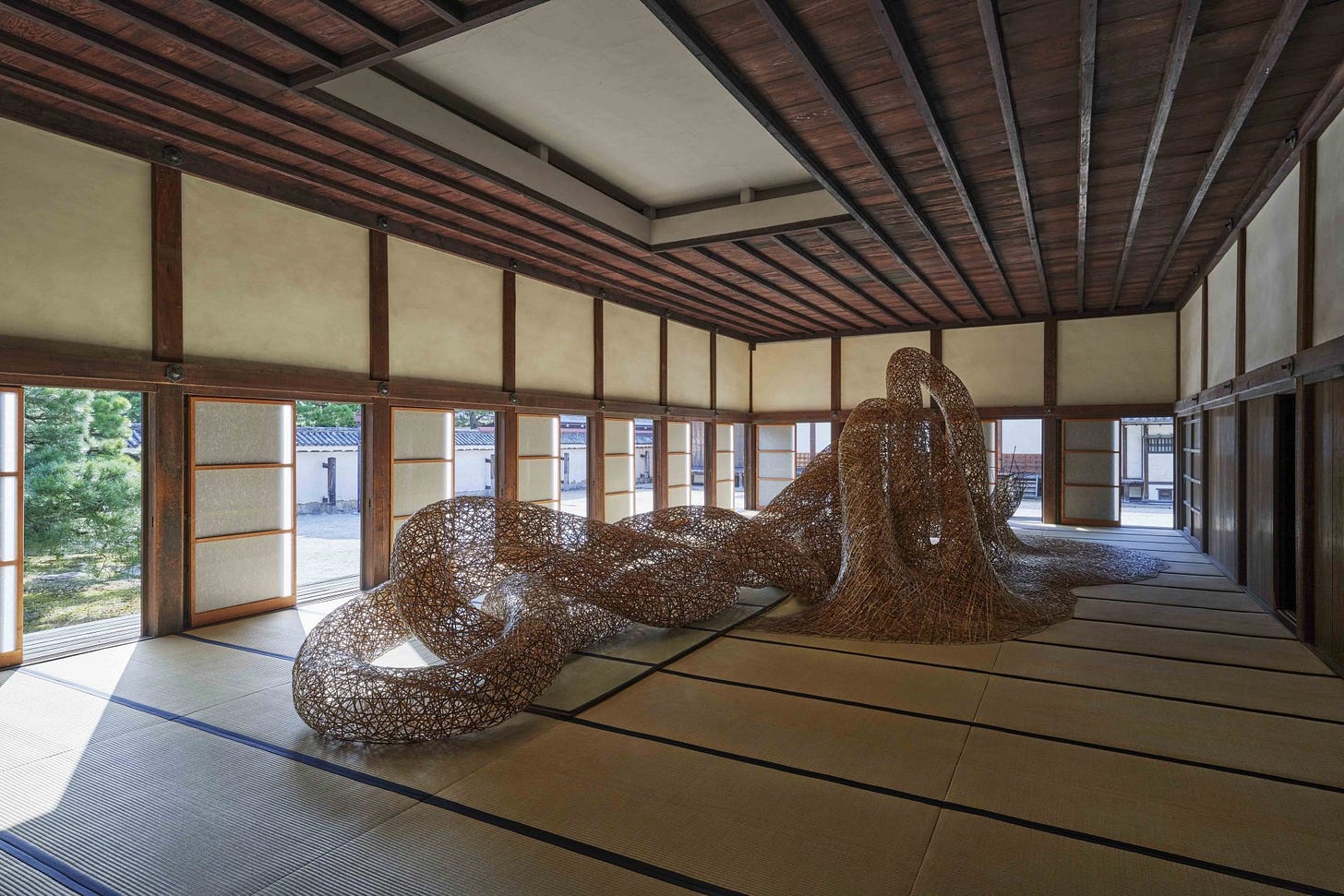
Artists, too, are drawn to its elegance and versatility. Among them is Tanabe Chikuunsai IV, who works almost exclusively with bamboo, bending and weaving it into colossal sculptures that rise, twist, and unfurl like living forms. His installations reshape spaces, transforming rooms into forests of motion and light. Looking at one such installation, considering bamboo’s unique approach to life and remembering that first encounter in the grove with its ethereal sound, it’s not difficult to feel a sense of respect and awe for this unclassifiable, mysterious being.
References
EN
https://www.gov-online.go.jp/eng/publicity/book/hlj/html/202208/202208_01_en.html
https://www.gov-online.go.jp/pdf/hlj/20220801/hlj202208_all_The_Japanese_and_Bamboo.pdf
Van Dam, J. E. G., Elbersen, H. W., & Daza Montaño, C. M. (2018). Bamboo Production for Industrial Utilization. Perennial Grasses for Bioenergy and Bioproducts, 175–216. doi:10.1016/b978-0-12-812900-5.00006-0
JP



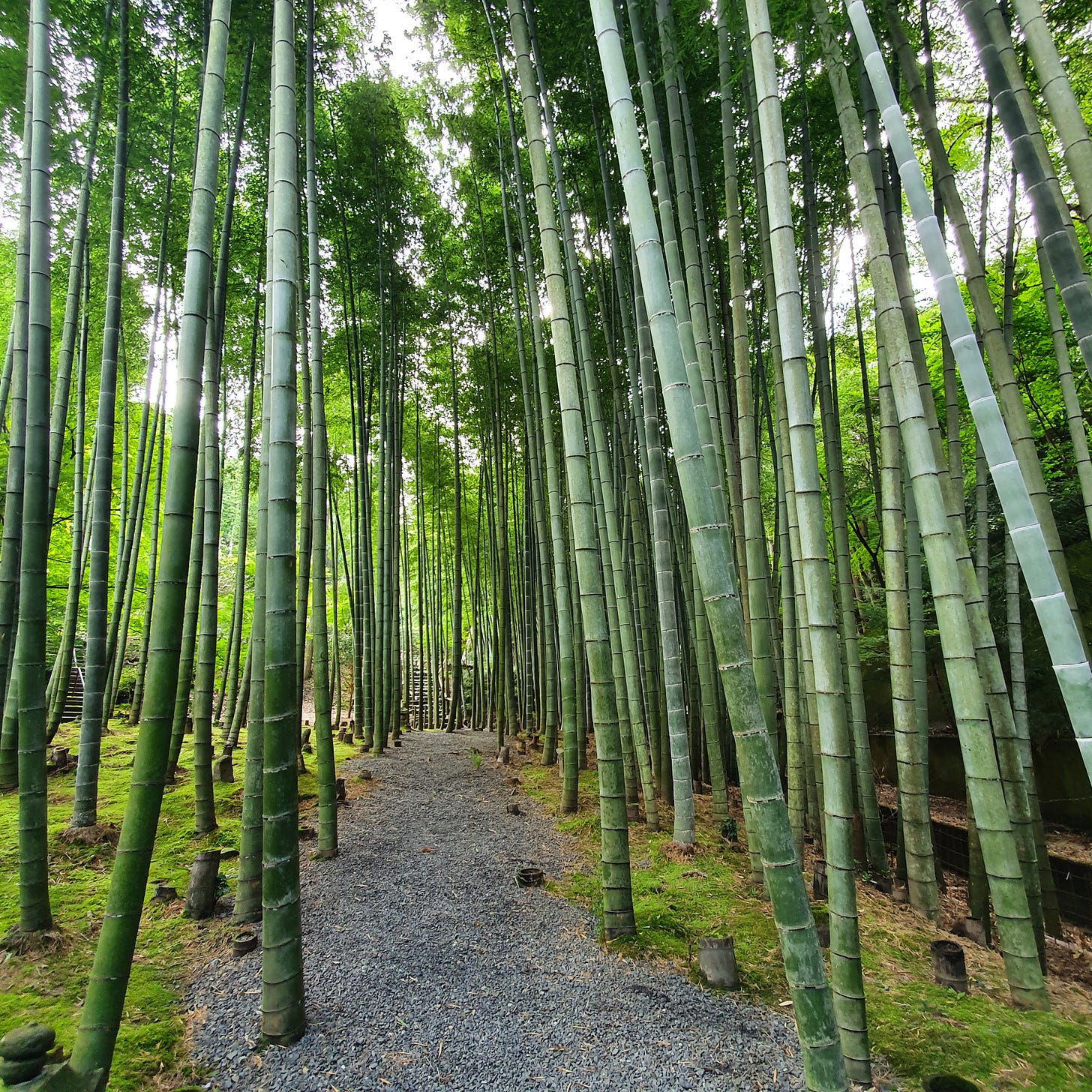

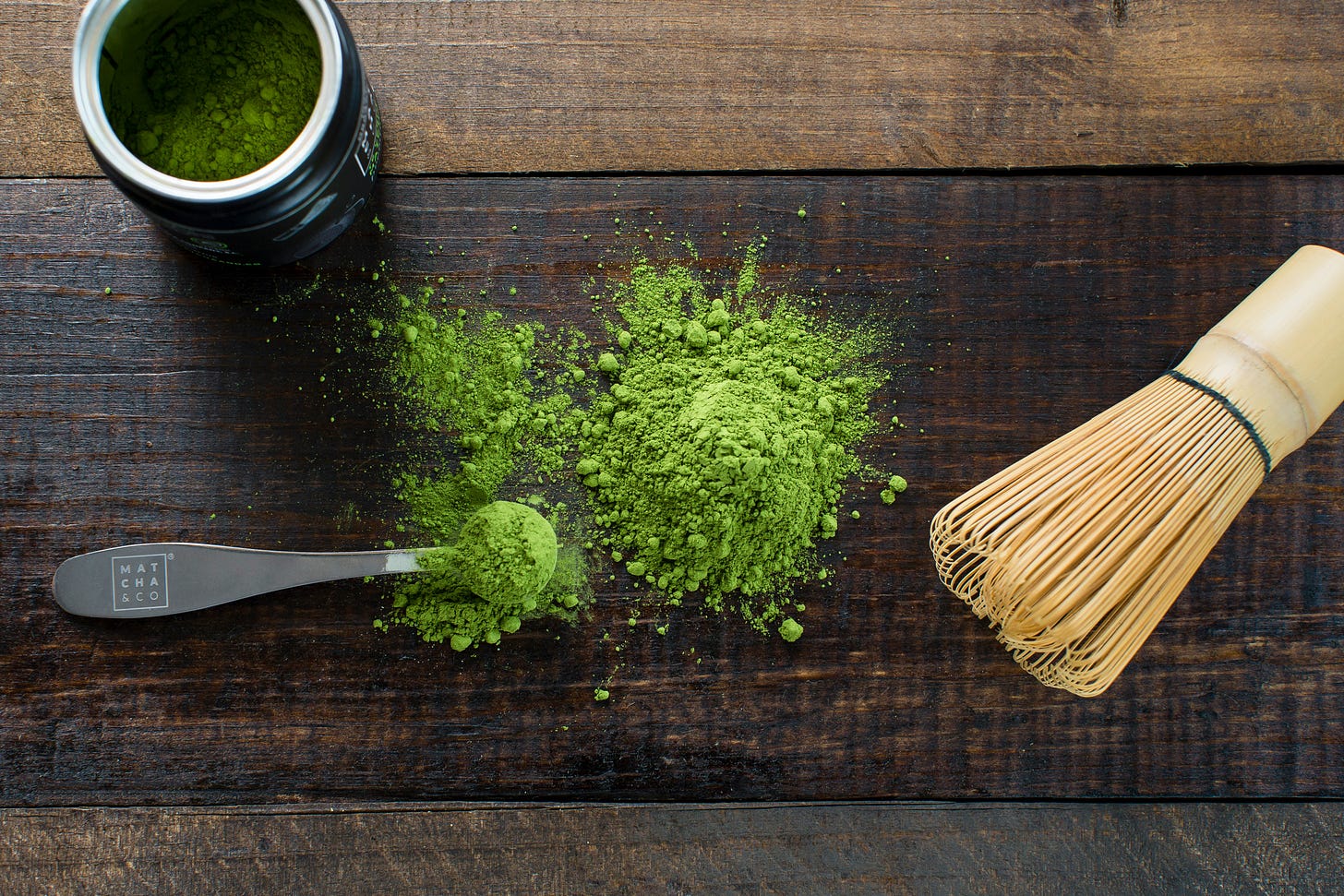

Thank you for your comment!
It sure is...there's nothing quite like it.
If you have the chance to come to Japan, I suggest going to places other than Arashiyama in Kyoto:) ( it's beautiful but too crowded IMO)
https://www.tokyoweekender.com/travel/alternative-bamboo-forests-japan-arashiyama/
On the other hand when I was researching this article I was surprised to discover how many other countries have bamboo as a native plant!
A lifetime ago I spent many nights in Okinawa guarding an armory in a bamboo grove. When the wind hit just right it would sound like people chattering.